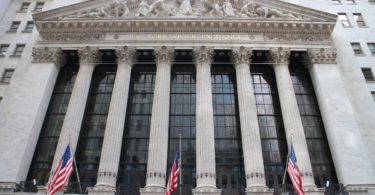From: Marc Chaikin's Company, Chaikin Analytics
When interest rates rise, interest revenue for banks rises faster than interest expenses.
It’s a custom that has developed over time…
But depositors at the now-infamous and now-failed SVB Financial (SIVB) – which did business as Silicon Valley Bank – didn’t honor that custom. They didn’t play by the rules.
As a result, interest income and margins for banks might never be the same again. And the same thing goes for the supposed “bullish” case for banks when interest rates rise…
In a legal sense, SVB was just another bank. But as its trade name of Silicon Valley Bank suggests, it was much different in reality…
SVB had an unusually wealthy, sophisticated, and demanding client base.
These folks didn’t just sit back, watch interest rates rise, and continue to settle for lowball deposit rates. They knew how to find better deals with just a click of the mouse.
So as rates rose, they pulled a lot of money away from SVB to chase better deals. And naturally, SVB had to come up with the cash to meet the influx of withdrawal demands…
SVB had a large portion of its assets invested in U.S. Treasurys. And as we all know, these securities’ market values plummeted as the Federal Reserve raised interest rates.
Now, a pullback like that can be tolerable. Many institutional holders of fixed-income portfolios can hold these securities until they eventually mature at 100 cents to the dollar.
SVB was different. Its yield-seeking clients requested so many withdrawals so fast that the bank had no choice. It had to immediately sell a lot of its depressed U.S. Treasurys.
Paper losses guaranteed to vanish at maturity are one thing. Immediate real-money losses are a whole new ballgame.
This sort of liquidity crunch can cause failure. That’s exactly what happened to SVB.
Now, almost everyone with any type of platform is talking about SVB’s failure. And that’s critical for the future of consumer banking…
All this news coverage about SVB’s clients refusing to play the old ballgame of just letting banks benefit from rising loan rates while leaving depositors behind could create a snowball effect. It could inspire John and Jane Average to start taking their money elsewhere.
We’re no longer living in the 20th century, when banks were often legally restricted to operating within a single state. We’re not even living at the turn of the 21st century, when many folks still cherished the convenience and occasional need to go to a physical branch.
Today, we can use mobile devices to shop for better rates wherever we can find them…
Free web portals like NerdWallet (NRDS) and Bankrate help everyday folks get better rates. It’s similar to how Expedia (EXPE) and other websites help folks shop for flights and hotels.
Banks are eager to offer easy online account setup and transfer in order to poach clients from other banks. (Others poach from them, too. But that’s life – and just business.)
Consumer banking won’t change overnight. Nothing does. After all, it took years or even decades for many people to get comfortable buying stocks or shopping online.
More people need to get comfortable with the idea of mobile check deposits, looking at account fees in addition to rates, and more. Until then, the custom won’t change.
But as we’ve seen over and over, the world evolves. Once change is set in motion, it doesn’t stop.
So the custom of “everybody knows rising interest rates benefit banks” looks to be on a very short leash.
“Bank Runs Will Soon Get Worse,” Expert Marc Chaikin Warns
Editor's Note: Last November, Marc Chaikin warned: “A major shift in our financial system could lead to a RUN ON THE BANKS in 2023.”
Sure enough, this week we saw the collapse of Silvergate Capital and Silicon Valley Bank, in the biggest failure since 2008. “That's only the beginning,” Marc says. Read on for the full details…
Get Your Money Out of U.S. Banks Immediately:
Wall Street legend Marc Chaikin has warned 8.4 million Americans to prepare immediately.
“A historic financial reset in 2023 could cause a run on the banks unlike anything we've seen in our country's history,” he says.
Marc Chaikin has already appeared on 30 different TV networks to share his warning. Even CNBC's Jim Cramer has taken notice.
But few people realize this could actually happen on U.S. soil. Or what a sizable impact it could have on your wealth, especially if you have large amounts of cash in the bank right now.
Chaikin is best known for predicting the COVID-19 crash, the 2022 sell-off, and the overnight collapse of Priceline during a CNBC debate. In his 50-year Wall Street career, he worked with hedge funds run by billionaires Paul Tudor Jones and George Soros.
But today, he is now urging you to move your money out of cash and popular stocks and into a new vehicle 50 years in the making.
“This is by far the best way to protect and grow your money in what will surely be a very difficult transition for most people,” Chaikin says.
Click here for the full story, and his free recommendation.





